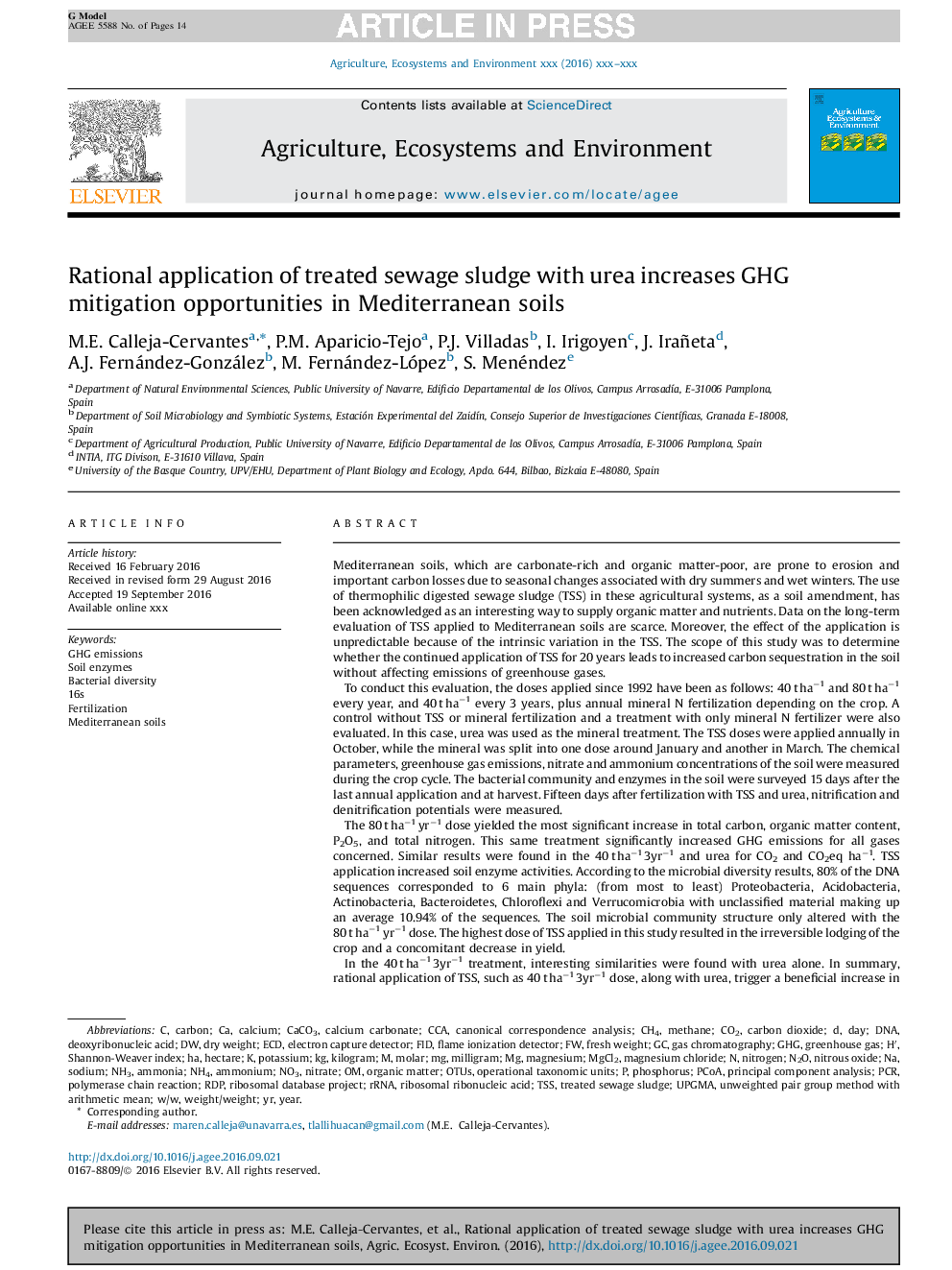| Article ID | Journal | Published Year | Pages | File Type |
|---|---|---|---|---|
| 5537962 | Agriculture, Ecosystems & Environment | 2017 | 14 Pages |
Abstract
In the 40 t haâ1 3yrâ1 treatment, interesting similarities were found with urea alone. In summary, rational application of TSS, such as 40 t haâ1 3yrâ1 dose, along with urea, trigger a beneficial increase in microbial activity in soil, that ultimately activates soil metabolism and enhances carbon sequestration possibilities, while GHG emissions remain at the same level as with urea alone. The results support the hypothesis that TSS can induce carbon sequestration without increasing GHG emissions. TSS has proven to exert beneficial outcomes under Mediterranean conditions; additionally, its application offers a viable opportunity for converting this by-product into a fertilizer. However, application rates must be adjusted or it should be used together with mineral fertilization.
Keywords
UPGMACH4N2OGHGNH3RDPCaCO3ECDCCAMgCl216SNO3H′PCoAw/wWeight/weightNH4rRNATSSDNAOTUsElectron capture detectorflame ionization detectorAmmoniaAmmoniumSoil enzymesdeoxyribonucleic acidribosomal ribonucleic acidGHG emissionsNitrous oxideCanonical Correspondence AnalysisPrincipal component analysisBacterial diversityMediterranean soilsFIDCarbon dioxideDAYunweighted pair group method with arithmetic meanyearSodiumPhosphorusFertilizationorganic matterMethaneMagnesiumMolarmilligramNitrateNitrogenhectareOperational taxonomic unitspolymerase chain reactionPCRfresh weightdry weightPotassiumribosomal database projectCarbonCO2Calcium carbonateGas chromatographyMagnesium chlorideCalciumkilogramGreenhouse gas
Related Topics
Life Sciences
Agricultural and Biological Sciences
Agronomy and Crop Science
Authors
M.E. Calleja-Cervantes, P.M. Aparicio-Tejo, P.J. Villadas, I. Irigoyen, J. Irañeta, A.J. Fernández-González, M. Fernández-López, S. Menéndez,
